The Library of Consciousness
of Consciousness

Eternity is not something everlasting, and you can have it right here now in your relationships.
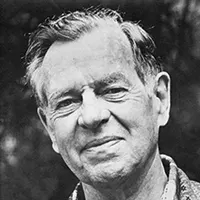
1988

Mindfulness is the practice of purposefully bringing one’s attention to the present moment without judgement. The roots of mindfulness can be traced to ancient Buddhist meditation practices, but even outside of spirituality, it has become an increasingly popular way to reduce stress and anxiety. Research shows that mindfulness affects the brain, and regular practice can lead to improved regulation of emotions and enhanced cognitive skills.
Modern applications of mindfulness include mental health treatment plans, corporate wellness programs, and self-help regimens. Rather than an esoteric spiritual discipline, it is now seen as a practical set of techniques for everything from alleviating depression to boosting productivity. Common practices include mindful breathing, body scans to bring non-judgmental awareness to physical sensations, and noticing thoughts and emotions without reacting to them. While the underlying neuroscience is complex, the basic mindfulness exercises are simple and accessible.

A Beautiful Loop
An Active Inference Theory of Consciousness
Laukkonen and Chandaria propose that consciousness arises from a recursive brain process involving three key elements: a reality model, competitive inferences reducing uncertainty, and a self-aware feedback loop. This framework explains various states of awareness, including meditation, psychedelic experiences, and minimal consciousness. It also offers insights into artificial intelligence by connecting awareness to self-reinforcing predictions. The authors’ theory suggests that consciousness emerges when the brain’s reality model becomes self-referential, creating a “knowing itself” phenomenon. This recursive process underlies different levels of conscious experience and potentially informs AI development.
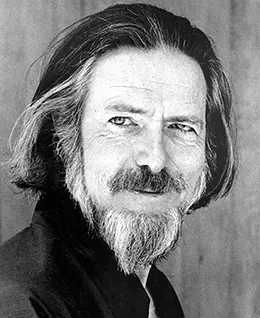
Art of Meditation
In this radio program, philosopher Alan Watts leads a meditation session to help listeners experience reality beyond mental chatter. Through mindful awareness of sounds, breathing, and chanting, he guides an exploration of slowing the thinking mind and awakening to the eternal now. The program offers an accessible introduction to meditation and its potential to transcend illusory divides between self and world.
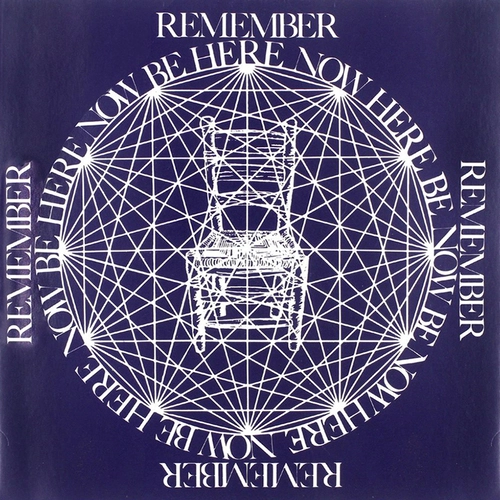
Be Here Now
This book is a classic text on Hindu spirituality that bloomed open like a lotus flower in the wake of the hippie movement. The seed for this book was planted in the mind of Harvard psychiatrist turned Indian mystic, Ram Dass, and was written—with the blessings of his guru Neem Karoli Baba—for a Western audience who were, for the most part, materially rich but spiritually poor. Be Here Now offers its readers and followers a drug-free alternative for attaining higher states of consciousness, while its simple message to live in the present encourages the pursuit and cultivation of inner peace.

Beat Zen, Square Zen, and Zen
A classic essay on the many ways in which Western cultures have misunderstood and misapplied the essence of this profound and subtle understanding of life. Provides a core understanding of what Zen isn’t, which significantly contributes to an appreciation of the value of Zen in one’s life. A short but highly rewarding read.

Beyond Success
Ram Dass investigates the effect of success upon our individual consciousnesses and how one may see beyond mere egocentric opportunism.
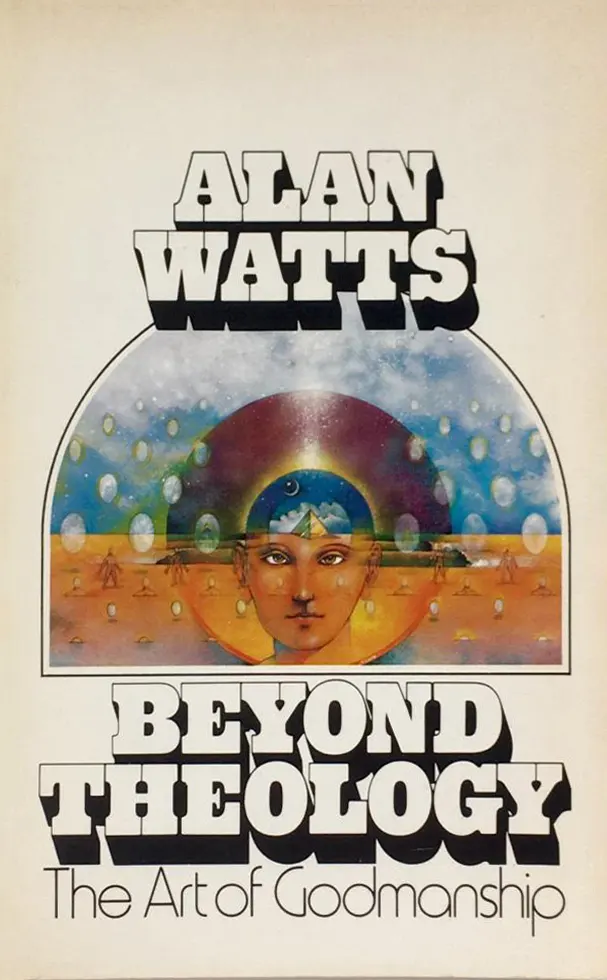
Beyond Theology
The Art of Godmanship
Alan Watts examines the theme that our normal sense of the person as a lonely island of consciousness is a dramatic illusion based on theological imagery. In a global context, the meaning of this imagery inevitably changes, yet without losing its unique values.

Birth, Death, and the Unborn
All the patterns we see around us in the world are projections of our minds. There is no way things should be, there is no way things shouldn’t be. But if humans can adopt a mental discipline in which they remain able to project patterns without becoming hung up on them, life for everyone will transform into a beautiful artwork.

Buddhism as Dialogue
Zen: the art of catching yourself in a cosmic game of tag! Watts unveils how Zen masters craftily set up double-binds, pushing seekers to chase their tails in pursuit of authenticity. It’s a merry-go-round of “be spontaneous!” and “don’t try!” until—pop!—the illusion of a separate self bursts like a soap bubble. In this whimsical dance of paradoxes, Watts reveals that the ultimate punchline of Zen is realizing there was never anyone there to get the joke in the first place!

Clarity of Mind
Watts reveals a simple truth to his audience at the University of California: the mind's incessant chatter is the root of all that ails a mortal's soul. By silencing its din one can get to know life's mystery.

Cloud-Hidden, Whereabouts Unknown
A Mountain Journal
Over the course of nineteen essays, Alan Watts ruminates on the philosophy of nature, ecology, aesthetics, religion, and metaphysics. Assembled in the form of a mountain journal, written during a retreat in the foothills of Mount Tamalpais in California, Cloud-Hidden, Whereabouts Unknown is Watts’ meditation on the art of feeling out and following the watercourse way of nature, known in Chinese as the Tao. Embracing a form of contemplative meditation that allows us to stop analyzing our experiences and start living into them, the book explores themes such as the natural world, established religion, race relations, karma and reincarnation, astrology and tantric yoga, the nature of ecstasy, and much more.

Consciousness and Rhythm
This seminar explores consciousness as an intrinsic rhythmic interplay with reality. Watts challenges notions of separateness, asserting that individuals are not detached witnesses, but instead fundamentally unified with the cosmos. He encourages transcending ego and dualistic thinking to harmonize with the underlying patterns and dance that all differentiated experiences, including our own being, arise from. The goal is realizing our inherent interconnectedness with the seamless whole.

Contemplative Ritual
Alan Watts critiques sermonizing verbosity and champions contemplative rituals as paths to oneness with cosmic energy. Casting aside guilt and intellect, he beckons participants to listen, breathe, and hum into profound awareness. Meditation, he says, isn’t about effort but about letting thought dissolve into silence. Through sound, breath, and presence, he invites all to transcend ego and words, glimpsing the eternal present—a hymn to the harmony of self and cosmos.

Developing an Inclusive Consicousness
Renowned yogi, mystic, and visionary humanitarian Sadhguru addresses points and concerns around inclusiveness raised by a panel of VPs and Google employees, explaining how individuals can create a quality of inclusiveness within themselves. By elaborating how such an attitude can impact our work places, homes, and communities, he provides practical thoughts and tools to create a more inclusive consciousness—the most important aspect that’s needed in the world today.

Diamond Way
Watts beckons us to peer past the veil, where remembering and forgetting engage in a cosmic dance. Traverse the paradoxical streams of jiriki and tariki, self-power and other-power, until the very concept of “I” dissolves like a dewtopped lotus. Prepare to be unshackled and uninhibited, for in the quest for nothingness lies the quintessence of everythingness.

Do You Do It Or Does It Do You?
Alan explores the meaning of personal free will in the context of core tenets in Eastern mythology: how is it possible to control anything when preexisting conditions outside of our influence determine our present situation? It is a realization of the hidden unity behind our apparent diversity and a relinquishing of obsessive control that enables us to unlock a pathway leading out of the conundrum and towards a celebration and reverence of life.
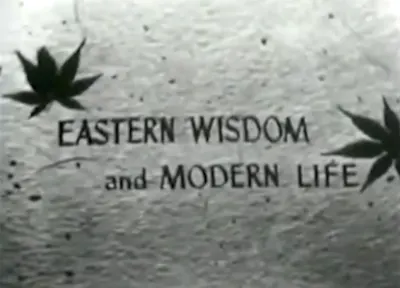
Man and Nature
Eastern Wisdom and Modern Life (Episode 1)
Alan Watts speaks on the contrast between classical Chinese and historic Western attitudes in regard to man's place in nature. Do we see ourselves as nature's conquerors or collaborators?

Time
Eastern Wisdom and Modern Life (Episode 3)
This program looks at the East Indian concept of time and the illusion of living for the future as the tomorrow that never comes. Plans for the future are only useful for those able to live fully in the present.

The Void
Eastern Wisdom and Modern Life (Episode 4)
Buddhism symbolizes its basic spiritual experience as a void, but Alan Watts explains this must not be taken literally. Watts explores the void as a symbol of freedom and of a world feeling which can be described poetically though not logically as the "absolute rightness" of every moment.

The Silent Mind
Eastern Wisdom and Modern Life (Episode 5)
One who talks all the time can never hear what others say. And one who thinks all the time has nothing to think about except thoughts. Alan Watts examines the value of silent-mindedness or the practice of meditation in Hinduism and Buddhism.

Pain
Eastern Wisdom and Modern Life (Episode 9)
Alan Watts discusses the Hindu, Buddhist and Taoist ideas about physical and moral pain, emphasizing the art of accepting pain by ridding it of its contextual associations.

On Being Vague
Eastern Wisdom and Modern Life (Episode 11)
The idea of clear-cut "definiteness" reflects as a sharp and somewhat hostile attitude to life. In this talk, Alan Watts shows the value of the vague and gentle approach reflected in Far Eastern poetry and painting.

Zen in Fencing and Judo
Eastern Wisdom and Modern Life (Episode 17)
A demonstration how the Taoist influence in Aikido and Judo also influenced swordsmanship.

Buddhism and Christianity
Eastern Wisdom and Modern Life (Episode 18)
Watts brings his expertise to bear in this presentation of Mahayana Buddhist and traditional Christian world views (he was once an Episcopal priest), and how to bring the two together.

Mahayana Buddhism
Eastern Wisdom and Modern Life (Episode 20)
What lies behind the fluttering forms we see? No clay, cries Buddhism, just a ceaseless dance devoid of stuff and substance. Grasping at ghosts within grants no relief, rather anxiety’s siege. Freedom rides life’s wave instead of taking cover. Be sage and bodhisattva mid melody, summoning the courtesan’s carefree bliss. Embrace experience utterly, no escaper you need be. For the void is full, if we still our need to fill.

Eco Zen
Imagine realizing you are not just a wave, but the entire ocean! In this talk, Alan Watts skillfully guides us through Zen concepts, explaining how techniques like kōans break down our false sense of a separate self, leading to the profound realization that we are the whole flowing universe.

Ecological Awareness
When Alan Watts talked about the ‘mystical experience’ among scientific circles, he preferred to call it ‘ecological awareness’—referring to a state of mind in which a person ceases to feel separate from the environment in which he or she exists.

Education for Non-Entity
(A True Materialist Society)
Alan presents his argument that the United States—often referred to as the ultimate materialist society—is anything but: it lacks a sincere appreciation for the material world and inadvertently destroys it in an attempt to “live the good life,” chasing after ever greener pastures just beyond the horizon of time.

Embracing the Mystery
“Real compassion is bringing the cosmic giggle into the moments of your life.” With this intriguing statement, Ram Dass invites us to embrace life’s profound mystery. He calls us to transcend our small sense of self and victimization, to open our hearts to suffering with compassion, and to let go of our need to control the uncontrollable. Instead, we can rest in the spacious awareness that embraces all phenomena without judgment—holding both our individuality and our unity, reveling in the cosmic giggle.

Emptiness Dancing
Who are you when you are not thinking yourself into existence? What is ultimately behind the set of eyes reading these words? In Emptiness Dancing, Adyashanti invites you to wake up to the essence of what you are through the natural and spontaneous opening of the mind, heart, and body that holds the secret to happiness and liberation. From the first stages of realization to its evolutionary implications, Adyashanti shares a treasure trove of insights into the challenges of the inner life, offering lucid, down-to-earth advice on topics ranging from the ego, illusion, and spiritual addiction to compassion, letting go, the eternal now, and more.
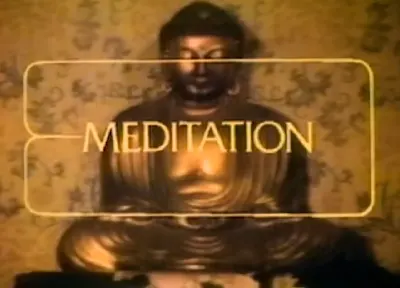
Meditation
Essential Lectures, Program 3
As Alan Watts explains, “A person who thinks all the time has nothing to think about except thoughts and loses touch with reality.” He covers basic mediation techniques, including listening without naming and chanting mantras.

Work and Play
Essential Lectures, Program 7
Alan Watts swirls an orange on a string and shoots an arrow high into the air before explaining why the art of living is being paid to play—and to the extent that we feel compelled to work and survive, life becomes a drag.

Death
Essential Lectures, Program 8
Alan Watts comments on the circle of life and our response to the surprising event of being born in the first place.

Flow
Symbolic Reality vs. Real Reality
In a cosmic dance of consciousness, Alan unveils the paradox of meditation: forceful pursuit versus effortless surrender. He peels away layers of symbolic thought, revealing the raw essence of direct experience. Challenging spiritual ego and commercialized enlightenment, Watts advocates for a natural flow of sensory awareness. He invites us to question our cultural lenses and embrace a fluid reality—not of static objects, but of vibrant, ever-shifting energy. In this perspective, true wisdom emerges not from grasping, but from letting go.

Following the Middle Way
Awaken and find peace. Alan illuminates the path out of suffering with Buddhist philosophy as our guide. Through practicing the Noble Eightfold Path of skillful understanding, action, meditation, and concentration, we walk the Middle Way to freedom from clinging and awaken to our interconnected nature.

Four Ways to the Center
Can an ego overcome egocentrism? Can a self become selfless? Is there even any value in this pursuit, and if so, how should one approach it? Through renunciation and repentance, or through acceptance and merging into it? Many consciousnesses encounter this conundrum on the brisk seas of being, and Alan invites us to take a closer look at our so-called individuality.

Future of Communications
Part 2
Watts suggests that the essence of communication lies not in its content, but in its style—a joyous dance akin to music. He argues that the seemingly irrelevant and meaningless aspects of life, so cherished by children, may hold the key to true wisdom. By embracing the absurdity and spontaneity of existence, we can rediscover the art of living and find delight in the grand cosmic play.

I Am That
In the heart of Mumbai’s bustling streets, a humble beedi shop owner named Sri Nisargadatta Maharaj delved deeply into the nature of existence, emerging with profound insights that have since captivated spiritual seekers worldwide. I Am That is a collection of his dialogues, where complex metaphysical concepts are unraveled with startling clarity and simplicity. Through conversations steeped in Advaita Vedanta, Maharaj guides readers beyond the illusion of individuality to the realization of their true, unbounded self. Each page invites you to question, reflect, and ultimately transcend the confines of the mind, offering not just philosophical musings, but a transformative experience that promises to change the very way you perceive reality. If you're seeking a profound spiritual awakening, I Am That is not just a book—it's a portal to understanding your true nature.

Intelligent Mindlessness
Alan discusses ways in which Western civilization confuses symbols with reality and introduces meditation and its associated gadgets as tools to get in touch with reality. Then he encourages his audience to cast off their reliance on symbols by guiding them through various mantra in a half-hour demonstration of this intelligent mindlessness.

Mind over Mind
Alan unravels the myth of self-improvement through willpower alone and exposes the fruitlessness of exerting control over one's own mind. He points to another way: let go of straining, soften your grasp of yourself, and watch experience unfold with impartial awareness. In releasing the fantasy of domination, he says, our natural essence emerges freely. A thought-provoking exploration of the boundaries of self-mastery and the grace of acceptance.

Mysticism and Morality
What if our feelings were never wrong? Philosopher Alan Watts probes the liberating link between mysticism's reverence for all things and an honest morality that accepts our emotions as natural, not shameful. By embracing our true feelings without pretense, we act with integrity, not violence.

Not What Should Be, But What Is
Alan reminds his audience that our mental image of the world is just an internal fairy tale loosely related to the truth of reality. Paying attention to our immediate sensory experiences can therefore help us lift this thought-tainted veil, an action which reveals the magic of being far better than any words ever could.

Of Itself So
Watts takes us on an odyssey to peer through the prism of East and West. Brace for a metamorphosis as familiar philosophical tenets are unraveled and recast in vibrant hues. From the celestial monarchies of old to the grand cosmic theater, diverse models of existence intertwine, beckoning us to shed our self-imposed blinders. An electrifying exploration of consciousness itself, this lecture tantalizes with the promise of inner awakening and long-sought liberation.
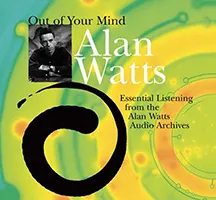
The Inevitable Ecstasy (Part 1)
Out of Your Mind 5
We are called to immerse in the sacred waters of the Now, releasing resistance's vain clutch upon illusion's crumbling stones. Feel each quivering wave, Alan chants, and the jewel of awakening will sparkle within your depths. Suffering fades when we cease damming the holy flow, surrendering instead to bliss's inevitable tide. Allow yourself to be cradled within sensation's currents. Let go, dissolve, and the river's timeless mercy will carry you home, beyond words, to dissolve in the ocean's mystical embrace.

The Inevitable Ecstasy (Part 2)
Out of Your Mind 6
With cosmic wit, Watts unveils the mystic truth: our selves are but specks of dust, our lives a flicker in eternity's eye. Yet in this vanishing wisp of consciousness, we may glimpse our true nature—the boundless void that births the ten thousand things. Facing the abyss with laughter, we find liberation in the inevitable ecstasy of dissolution.

The World as Just So (Part 1)
Out of Your Mind 7
Alan Watts lectures on the origins and essence of Zen, a branch of Mahayana Buddhism that spread from India to China and Japan. He discusses key concepts like satori, no-mind, and non-attachment, and emphasizes Zen's spontaneity, directness, and humor. Major figures covered include Bodhidharma, Hui-neng, Rinzai, and Dogen. Watts aims to illuminate Zen's appeal in the West and convey the feeling of its practices.

The World as Just So (Part 2)
Out of Your Mind 8
This lecture on Zen Buddhism describes the Japanese Zen monastery, meditation practices, kōans used by masters to guide students, and the enlightenment experience. Watts explains how masters help students break attachment to ego through impossible tasks. He contrasts Bankei's simple "unborn mind" Zen with Hakuin's intense kōan training.

The World As Self (Part 2)
Out of Your Mind 10
The journey of self-realization follows the winding path inward, to the place where you already are. As the egoic illusion falls away, the universe unveils your true face. Trust in the guru's skillful means, which trick the mind into its own liberation. Embrace each stage of life with sincerity, not forcing but allowing insight to dawn in its own time. Know yourself to be That, the eternal Self of all that is.

The World as Emptiness (Part 2)
Out of Your Mind 12
Alan Watts talks about the Buddhist perspective on change and impermanence. He discusses how Buddhism encourages detachment from the world of change and pursuit of nirvana, the state beyond change. However, clinging to nirvana as something permanent is still seeking permanence. True liberation comes from fully accepting change and transience, including death. The void or emptiness doctrine in Mahayana Buddhism elaborates on this by teaching that reality escapes concepts. Freedom comes from letting go of fixed ideas and accepting the void.

Parallel Thinking
Philosophy: East and West, Program 19
What a tickling trickster the universe is! As Watts wanders down philosophical byways, tales emerge of those healed by harmonizing body and world. Yet we teach children to twist themselves to fit odd ideals. Tension tunnels through society, our “civilizing” ways quite uncouth! Might we reconsider, relax our willful ways? Observantly ambling amidst being's little blooms, we rediscover unity in the unruly diversity—finding wisdom whispering within, inviting us to dance delightfully with life’s flowing forms.
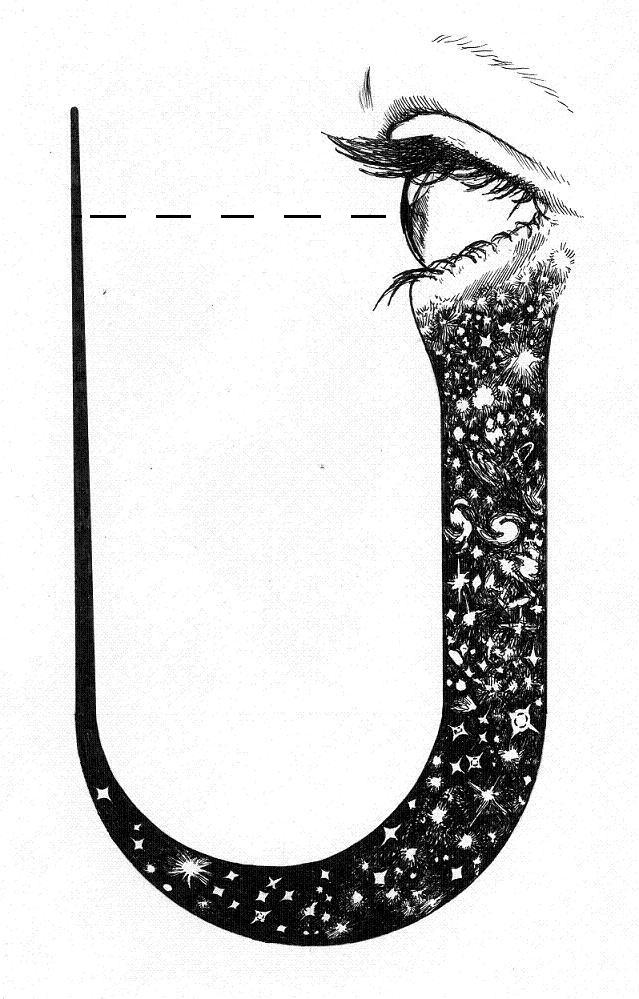
Participatory Universe
An attempt to illustrate the universe’s reflective, metacognitive nature.

Power of Space
Weaving connections between Eastern thought and modern science, Alan Watts explores the wonder of space. For him, space is no mere emptiness but a cosmic tapestry integral to existence. He draws parallels between space and the Buddhist void, seeing both as the interwoven ground of being that allows consciousness to emerge.

Problems of Meditation
Watts illuminates meditation as a vehicle to transcend the illusion of individuality and realize one’s intrinsic unity with the cosmos. He unveils a symphony of sacred techniques—from breath awareness to primordial sonic mysticism—as potential pathways to the ineffable experience of non-dual consciousness. By surrendering the ego’s compulsive control, one may ultimately arrive at the paradoxical fruition of subject and object coalescing into one unconditioned field of pure witnessing awareness.

Promises and Pitfalls of the Spiritual Path
The spiritual path is a groovy ride, my friends. We expected enlightenment right away in the sixties, but it’s a longer trip than that. We got high on siddhis and phenomena, but true freedom demands surrender of who you think you are. It’s a journey of being human, embracing suffering with joy. Use every experience as your curriculum to cultivate compassion and presence. Stay true to yourself and let your life be your message.

Pursuit of Pleasure
Where does pleasure come from? What are we trying to achieve in our frantic day-to-day activities? Why are we in such a hurry? And why do all of our efforts to pin the universe down and bring it under our control dial up the misery?

Q and A With God
After discussing the nature of consciousness, the human mind, and the philosophical viewpoint that every person is God, Alan Watts assumes the role of God himself for the latter half of this lecture, answering each question his audience serves with wit and insight.

Question Your Thoughts
A woman gripped by fear of Donald Trump lists her anxieties about concentration camps, nuclear war, and environmental harm. She wishes he’d leave office, stop hateful remarks, or make room for another leader. With Katie's guidance and audience support, she questions each thought. As she examines her beliefs, the weight of her thoughts begins to lift, and in a powerful moment of insight she realizes it’s her own mind—not Trump—fueling her fear.

Reality, Art, and Illusion
Join Alan as he expresses the meaning of life through the Hindu-Buddhist idea of reality as a divine game of hide-and-seek. "Life is not ultimately serious," Watts argues. By embracing the fluidity of identity and recognizing our interconnectedness, we can creatively engage with existence as impermanent, unified, and filled with playful potential. Accessible yet philosophically rich, these decades-old lectures offer timeless insights on the nature of reality.

Seeing Through The Illusion
Ram Dass reveals how our senses and thoughts dupe us about the essence of reality. By liberating our consciousness from clinging to the body and mind, we can plunge into the primal energy coursing through all form. This raw perception exposes our supposed detached self as a fantasy.

Sense of Nonsense
In this public radio broadcast, Alan explores the origin of the desire for meaningfulness. In the search for satisfaction, what is it that is really sought for or yearned after? The talk turns from academic discussion into poetry. What is the meaning of significance?

Still the Mind
Here Alan explores meditation and finding inner peace through watching your breath, chanting nonsense syllables, and generally chilling out. No goals, no force, just be. Let things flow through you. Some far-out stuff for sure, but Alan's as sincere as they come. Give it a listen if you're seeking something deeper.

Swimming Headless
Watts explores the Taoist concept of Te, or virtue, as a kind of natural excellence arising when one lives in harmony with the Tao. He examines how this spontaneous virtue contrasts with contrived virtue, relating it to wu wei and the power that comes from flowing with rather than against the river of existence.

Talk on Non-Self (Anattā)
Ajahn Brahm uses the metaphor of a lotus flower to describe the path of meditation leading to enlightenment. He guides the listener inward, petal by petal, until reaching the very heart—the ultimate truth of non-self and emptiness. With his characteristic wit and wisdom, he reveals how all phenomena are impermanent processes devoid of a permanent essence. Though initially confronting, Brahm suggests this teaching contains the song of freedom itself, destined to liberate those who have heard it.

Taoist Way
This talk explores the Taoist philosophy of living fully in the present moment without attachment to the past or future. According to Watts, following the Tao involves acting spontaneously and effortlessly without forcing, appreciating the interconnected nature of all things, and seeing through illusions of the ego and continuity of self across time. The goal is to experience each instant purely without getting caught up in intellectualizations.

The Contemplative Endeavor
Adyashanti illuminates the profound moment when awareness awakens to its own presence, likening it to a child's startling self-discovery in the mirror. He recounts Ramana Maharshi's fearless contemplation of death, which unveiled the eternal essence beyond the transient self. Adyashanti invites us to courageously encounter our immediate experience of being, for therein lies the foundation of authentic spiritual inquiry—a silent yet transformative communion with the heart of existence.

The Gateless Gate
Watts explores Zen Buddhism's unconventional approach to conveying enlightenment through seemingly mundane statements or actions instead of words or teachings. He delves into various Zen stories and their commentaries, revealing how direct pointing at reality can lead to a profound realization beyond the limits of language and conceptual thinking.

The Joker
One of Alan’s most popular seminars, and for good reason—in The Joker, listeners will find out why every society needs fools in order to remind itself not to take life so damn seriously.
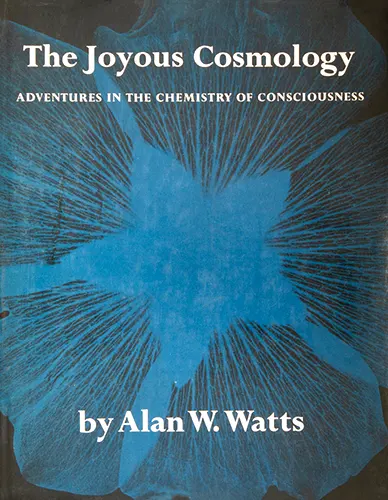
The Joyous Cosmology
Adventures in the Chemistry of Consciousness
The Joyous Cosmology is Alan Watts’ exploration of the insight that the consciousness-changing drugs LSD, mescaline, and psilocybin can facilitate when accompanied with sustained philosophical reflection by a person who is in search, not of kicks, but of understanding. More than an artifact, it is both a riveting memoir of Alan’s personal experiments and a profound meditation on our perennial questions about the nature of existence and the existence of the sacred.
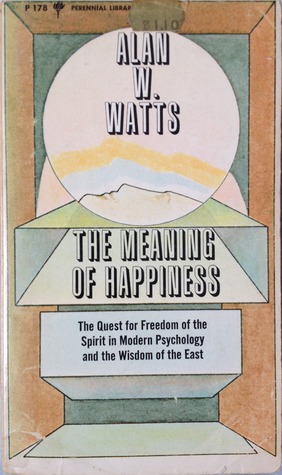
The Meaning of Happiness
The Quest for Freedom of the Spirit in Modern Psychology and the Wisdom of the East
Deep down, most people think that happiness comes from having or doing something. Here, Alan Watts offers a more challenging thesis: authentic happiness comes from embracing life as a whole in all its contradictions and paradoxes, an attitude he calls the “way of acceptance.” Drawing on Eastern philosophy, Western mysticism, and analytic psychology, Watts demonstrates that happiness comes from accepting both the outer world around us and the inner world inside us—the unconscious mind, with its irrational desires, lurking beyond the awareness of the ego. Although written early in his career, The Meaning of Happiness displays the hallmarks of his mature style: the crystal-clear writing, the homespun analogies, the dry wit, and the breadth of knowledge that made Alan Watts one of the most influential philosophers of his generation.
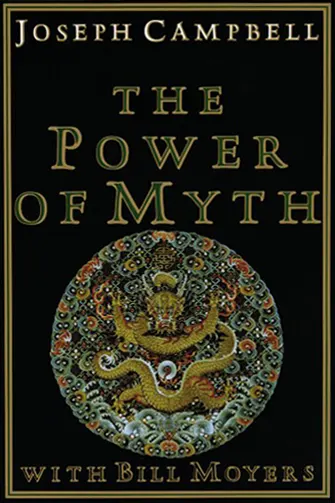
The Message of the Myth
The Power of Myth, Part 2
Bill Moyers and mythologist Joseph Campbell compare creation myths from the Bible and elsewhere, and talk about how religions and mythologies need to change with time in order to maintain their relevance in peoples’ lives.

The Psychedelic Explosion
Alan talks about the upcoming revolution in which Western society will have to come to grips with the existence of the psychedelic/mystical experience, and how to integrate it into our culture in a productive, fulfilling, and responsible manner. Included are personal recollections of DMT and LSD trips experienced by Watts himself, why the utilization of psychedelic drugs should be seen as a tool, his vision of a psychedelic campus for guided mystical experiences, and why prohibition is doomed to failure.
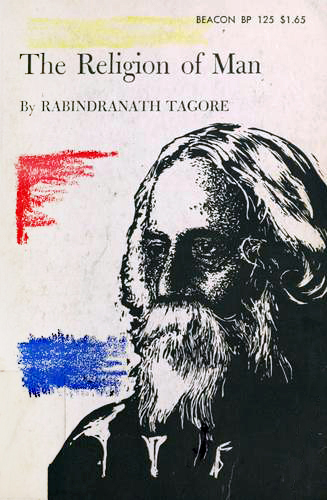
The Religion of Man
The Religion of Man is a compilation of lectures by Rabindranath Tagore, edited by him and drawn largely from his Hibbert Lectures given at Oxford University. A Brahmo playwright and poet of global renown, Tagore deals with the universal themes of God, divine experience, illumination, and spirituality.
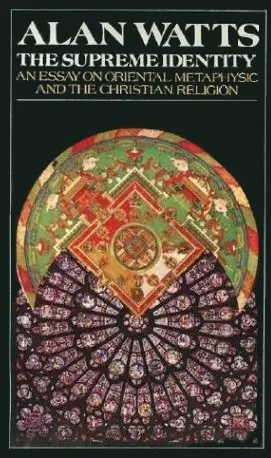
The Supreme Identity
An Essay on Oriental Metaphysic and the Christian Religion
One of the most influential of Alan Watts’s early works, The Supreme Identity examines the reality of civilization’s deteriorated spiritual state and offers solutions through a rigorous theological discussion on Eastern metaphysic and the Christian religion. By examining the minute details of theological issues, Watts challenges readers to reassess the essences of religions that before seemed so familiar and to perceive Vedantic “oneness” as a meeting ground of all things—“good” and “evil.” In addressing how religious institutions fail to provide the wisdom or power necessary to cope with the modern condition, Watts confidently seeks the truth of the human existence and the divine continuum.

Coincidence of Opposites
The Tao of Philosophy 3
Alan Watts explains the sense in nonsense and how to enjoy the playfulness of life while sincerely participating in the human game.

Man in Nature
The Tao of Philosophy 6
How should we view nature—as machine, drama, or organism? Alan says we must trust its organic patterns, explaining that the borders of our imagined selves determine our relationship to the environment and our role in the universe. So go with the flow, be purposeless, let the Tao wash over you like wild geese vanishing into clouds.

Limits of Language
The Tao of Philosophy 8
Alan Watts explains how language helps to construct reality, and what to do about it. He then follows up with the challenges of expressing the ineffable.
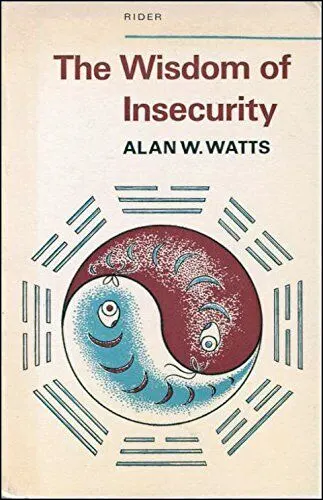
The Wisdom of Insecurity
This 1951 classic explores how our modern pursuit of security through money, status, and technology leads to anxiety. Watts artfully weaves Eastern philosophy and Christian mysticism to argue that seeking permanence in an impermanent world is futile. Rather, we must embrace the present moment and recognize the illusion of the ego. Watts writes breezily with penetrating insight about how relaxing our grip on life's impermanence paradoxically allows us to live fully. Though challenging at times, ultimately Watts' message brings great comfort in understanding the futility of chasing security. Give it a read and you may just find the wisdom that insecurity brings!
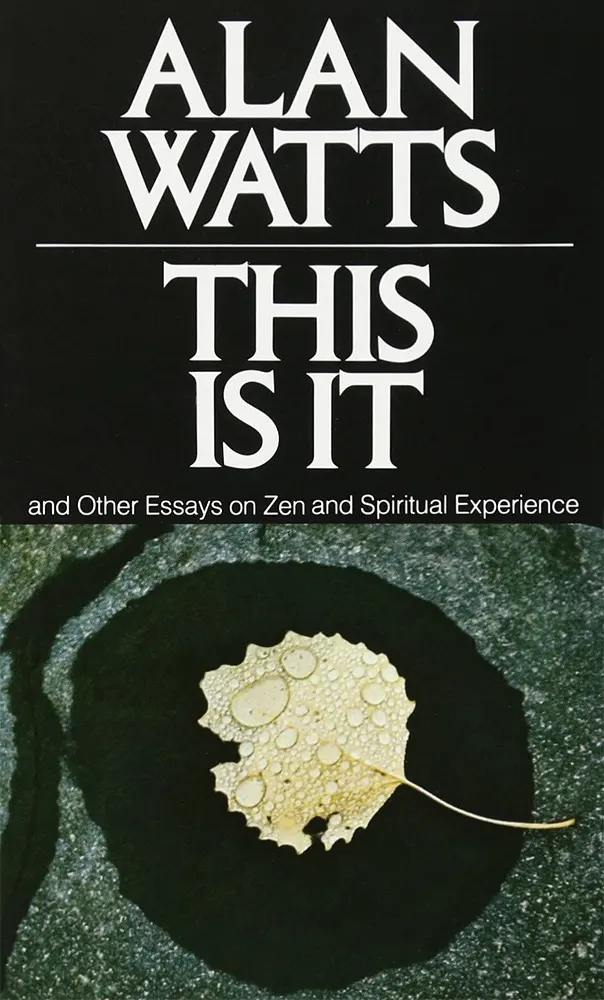
This Is It
and Other Essays on Zen and Spiritual Experience
Six revolutionary essays exploring the relationship between spiritual experience and ordinary life—and the need for them to coexist within each of us. With essays on “cosmic consciousness” (including Alan Watts’ account of his own ventures into this inward realm); the paradoxes of self-consciousness; LSD and consciousness; and the false opposition of spirit and matter, This Is It and Other Essays on Zen and Spiritual Experience is a truly mind-opening collection.

Transformation of Consciousness
Alan discusses the different states of consciousness which the human mind can attain, and some of the chemical compounds which may serve as tools to reach these mental realms.

Unserious Wisdom
(Buddhist Mysticism)
While Pure Land Buddhism promises easy enlightenment through faith in Buddha Amitābha, Alan Watts explains how its eccentric followers, the myōkōnin, found wisdom by goofing off. With playful tales of the monk Ryōkan’s antics, from imitating tigers to forgetting letters mid-juggle, Watts shows how these rascal sages attained childlike wonder by ditching spiritual bootstraps for carefree acceptance of their flawed humanity. For the myōkōnin, the path to Buddhahood involved more fun and games than pious efforts.

Who Are You
Ram Dass discusses the illusion of identity and attachment. He examines different levels of consciousness, from the egoic thinking mind to universal oneness. Dass encourages living fully while cultivating spacious awareness, embracing all of life's experiences as opportunities for awakening. He emphasizes being present, listening deeply, and recognizing the perfection underlying apparent imperfection.

Why Not Now?
Alan guides us through an intimate meditation session that explores the nature of “now” and the self through direct experience rather than intellectual understanding. Using a variety of sounds, breathing exercises, and physical movements, we experience presence without analysis or labeling.

World as Play
Watts presents a core Eastern philosophy of the world as a dramatic illusion, and that it exists for no other reason except to be experienced in a playful manner.

You Are Not What You Look Like
Harding invites us to investigate who we really are, beyond appearances. He argues we are not the body we see in the mirror; rather, the mystics say we are the unseen awareness peering out. So look within and discover you are not merely a mortal form, but the deathless source beholding this mirage called “life.”

Youniverse Explorer
Douglas Harding demonstrates his “Youniverse” educational toy, which visually depicts the process of investigating one’s identity, starting from the outer viewpoint of galaxies and zooming in to the innermost center.

Zen Bones
Alan invites us to float like clouds and experience life directly instead of mediating it through concepts. Constant thinking takes us from the real. Open wide the mind’s doors, be here, flow present like water. Watts touches on meditation’s liberating power in realizing our true nature already within. Sit, walk, breathe; see through illusion’s mist, marvel at the mundane’s hidden jewels, embrace each now, wake up! Enlightenment’s sunrise awaits those who cease thinking. Realize you're already It and let life’s living magic move your feet.
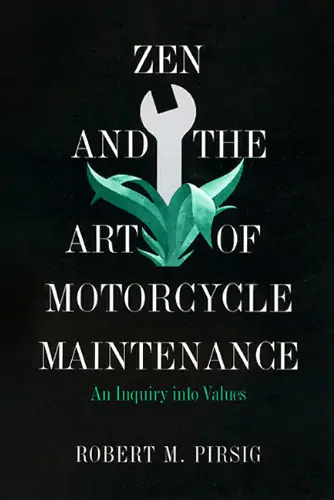
Zen and the Art of Motorcycle Maintenance
An Inquiry into Values
A father and son embark on a motorcycle road trip across the U.S., blending personal reflection with a deep philosophical exploration of life. The narrative examines the concept of “Quality,” a unifying idea that bridges art, science, and human values. Through vivid travel experiences and flashbacks to the narrator’s past, it questions the balance between rational thinking and intuition, the meaning of technology, and how people find purpose in their work and lives. It’s a journey of self-discovery and timeless insight.

Zen and the Art of the Controlled Accident
Most people grow up learning to treat life as a problem, a set of circumstances which must be controlled with an iron will. Some transcend this view, realizing there is no problem and nothing to attain. In that state of mind it becomes possible to act without intention, to have “controlled accidents,” and in so doing one may rejoin society as a whimsical rascal who breaks things to improve them.